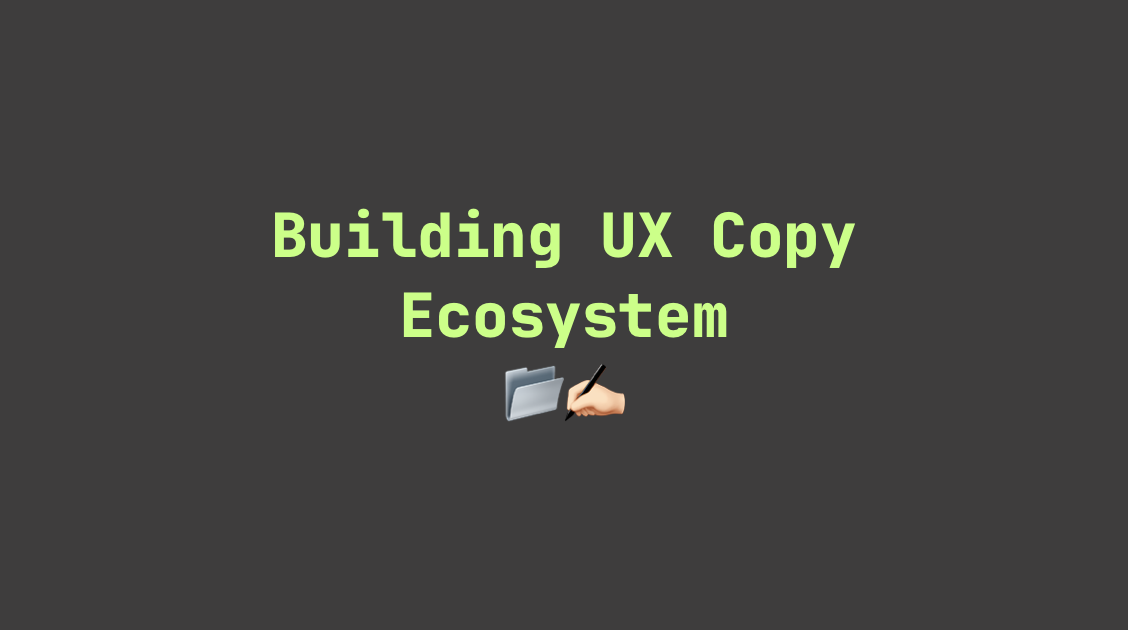Building UX Copy Ecosystem in Kredivo Group
As a Lead UX Writer in Kredivo, I built a scalable copy ecosystem to fix inconsistent messaging, reduce support queries, and elevate clarity across our fintech products.

UX Ecosystem That Actually Elevate Day-to-day Writing Ops
Project Overview
When I joined Kredivo as Lead UX Writer, I quickly saw the need for a structured approach to our UX copy. Inconsistent messaging, typos, and badly documented copy was confusing users and employees alike — also increasing support queries.
To tackle this, I set out to create a UX copy ecosystem.
Establishing the Baseline
The words we choose hold the power to shape user experiences, evoke emotions, and ultimately drive success. I established Writing Guideline that serves as our compass, guiding us on a journey to craft words with clearer motives and foster a sense of unity and purpose among our writing team. By adhering to these principles, we pave the way for exceptional user experiences and elevate the morale of our creative force.
Audience
Where the convergence of technology and finance reshapes the way we manage our money, understanding our diverse audience is paramount. Our 'buy now pay later' products are designed to empower individuals to make smart financial decisions while enjoying the convenience they deserve.
Plain Language
Clarity and transparency are paramount, the use of plain language is not just a preference but a necessity.
Our commitment to our users' financial well-being requires that we communicate in a way that is easily understood by all, regardless of their financial literacy. Plain language enables us to break down complex financial concepts into simple, clear, and jargon-free terms, fostering trust and making our services more accessible.
Examples of Plain Language in Financial Context
- Late Payment Fee:
- Instead of: "A late fee will be assessed if payment is not received by the due date."
- Use: "If you don't pay on time, you'll be charged a late fee."
- Credit Score Explanation:
- Instead of: "Credit scores are numerical representations of your creditworthiness derived from an algorithmic analysis of your financial history."
- Use: "Your credit score is a number that shows how well you've managed your money."
- Security Warning:
- Instead of: "Two-factor authentication is a mandatory security protocol that requires an additional verification step."
- Use: "For added safety, you'll need to do an extra check when you log in."
- Payment Confirmation:
- Instead of: "Your transaction has been successfully processed."
- Use: "Your payment went through."
By incorporating plain language into our communications, we not only make financial information more accessible but also demonstrate our commitment to clarity and transparency. This approach ensures that our users can confidently engage with our products and services, leading to greater financial literacy, trust, and a more empowered financial future.
Defining Terms
Creating a comprehensive glossary was crucial. Each term included definitions, usage contexts, and related terms, such as:
Building an Archive
I established a central repository using spreadsheets and ditto (3rd party tools in Figma), storing thousands of copy strings with tags and categories.
I also batch the user journey themes to make our team navigate easier.
User Journey Categories
| Quadrant | Description | Example Journeys |
|---|---|---|
| High Impact, Day-to-Day | Tasks that are common but carry significant consequences | Managing monthly finances, Transferring large amounts, Paying school tuition |
| High Impact, Unique | Life-changing decisions that are rare | Applying for a big loan, Choosing a health insurance, Starting a business |
| Low Impact, Day-to-Day | Routine tasks with low stakes | Topping up e–wallet, Checking transaction history, Setting daily spending limits |
| Low Impact, Unique | Infrequent design tasks with minimal stress or impact | Changing app theme, Editing profile photo, Enabling dark mode |
Demonstrating Copy Component
Collaborating with the design team, I integrated copy components into our design system, creating templates for UI elements like titles, microcopy for descriptions, buttons, and dialogs. For example, our bottomsheets that consist of title, description, and button followed a clear structure for next action.
Developing a Content Strategy Template
For larger projects, I created a content strategy template to address key questions about design problems, user interactions, and desired emotions. This ensured our copy was purposeful and impactful.
Conclusion
Building the UX copy ecosystem required continuous maintenance and collaboration. The result was a significant reduction in user confusion and support queries, and our team worked more efficiently, reusing established copy and focusing on innovation.
At Kredivo Group, our initiatives significantly enhanced our product’s user experience, resulting more than 20% increase in user conversion rates and achieving a 3 out of 4 satisfactory level in user surveys. This established a strong foundation for future growth.